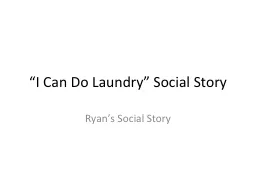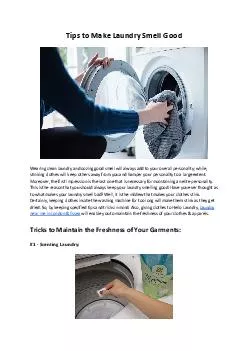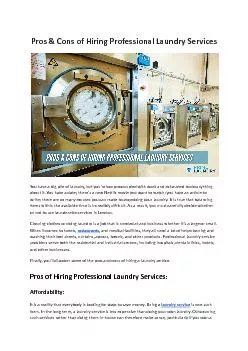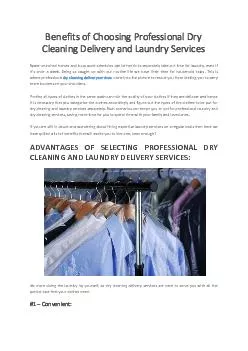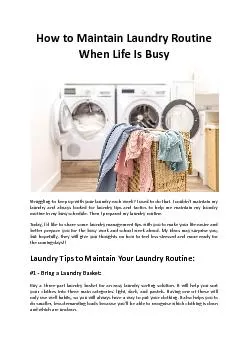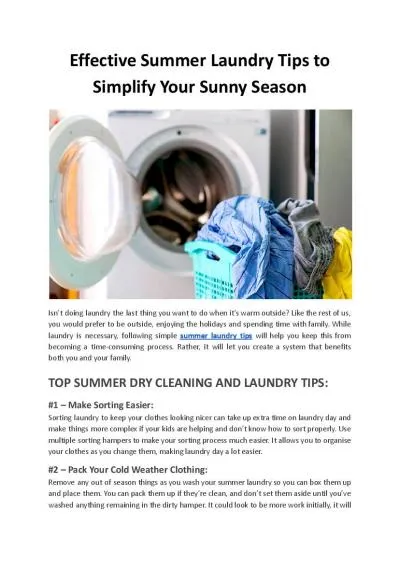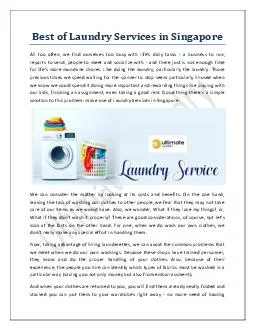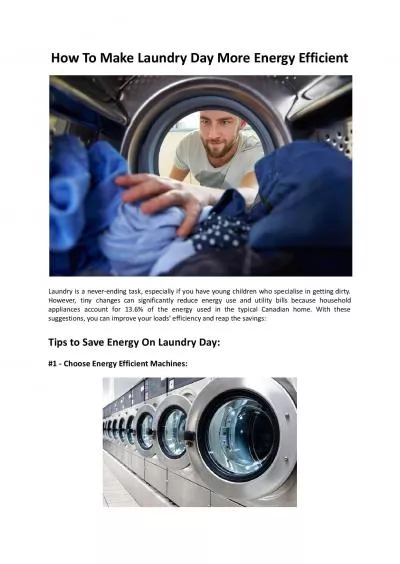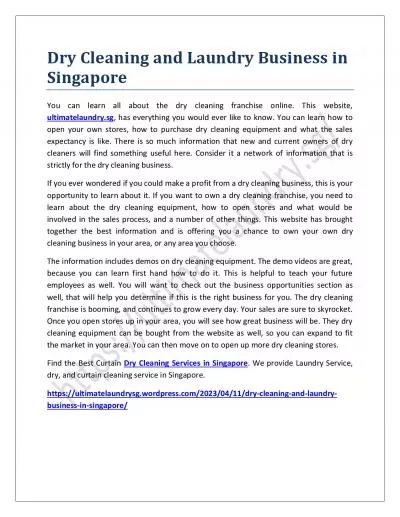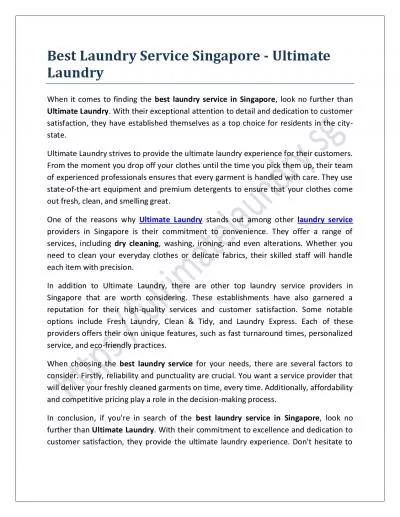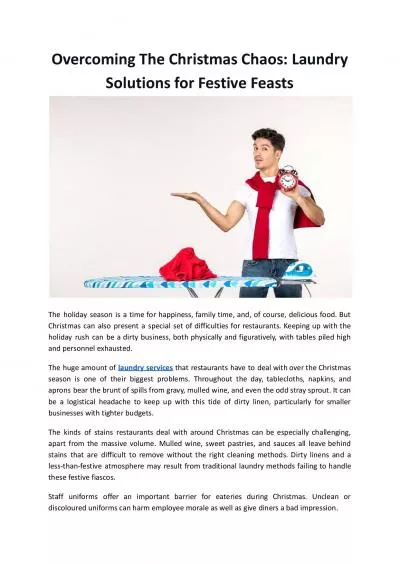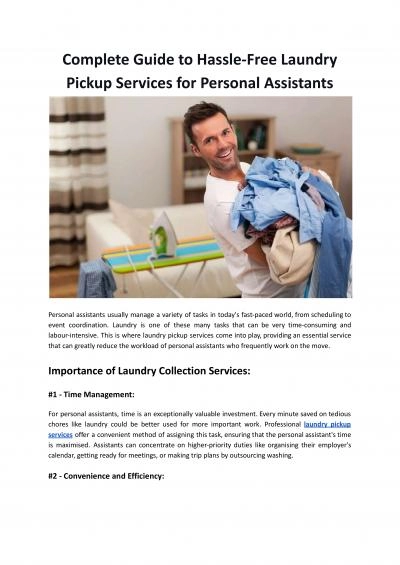PPT-“I Can Do Laundry” Social Story
Author : tatyana-admore | Published Date : 2016-11-12
Ryans Social Story Gather Dirty Items Sort WhitesColors Turn on Washing Machine Open Washing Machine Add Laundry Detergent Add Clothes Close Washing Machine Lid
Presentation Embed Code
Download Presentation
Download Presentation The PPT/PDF document "“I Can Do Laundry” Social Story" is the property of its rightful owner. Permission is granted to download and print the materials on this website for personal, non-commercial use only, and to display it on your personal computer provided you do not modify the materials and that you retain all copyright notices contained in the materials. By downloading content from our website, you accept the terms of this agreement.
“I Can Do Laundry” Social Story: Transcript
Download Rules Of Document
"“I Can Do Laundry” Social Story"The content belongs to its owner. You may download and print it for personal use, without modification, and keep all copyright notices. By downloading, you agree to these terms.
Related Documents

